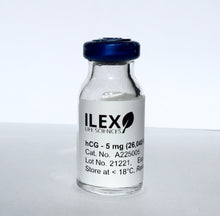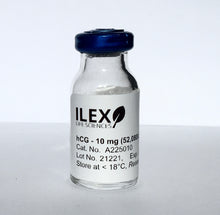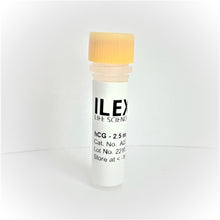NOTE: For laboratory research use only.
Description
Our bioactivity tested Human Chorionic Gonadotropin (hCG) is produced from a sterile preparation of placental glucoprotein urine of pregnant women and has a total molecular mass of 36,700 Dalton. The hCG consists of 237 amino acids, a chain-92 amino acids and b chain-145 amino acids. Our hCG is purified by proprietary chromatographic techniques.
Human chorionic gonadotropin (hCG) is a peptide hormone produced in pregnancy, that is made by the embryo soon after conception and later by the syncytiotrophoblast (part of the placenta). Its role is to prevent the disintegration of the corpus luteum of the ovary and thereby maintain progesterone production that is critical for a pregnancy in humans. hCG may have additional functions, for instance it is thought that it affects the immune tolerance of the pregnancy. Early pregnancy testing generally is based on the detection or measurement of hCG.
Application
Our hCG is commonly used in combination with our Pregnant Mare Serum Gonadotropin (PMSG, eCG) in superovulation protocols for the production of genetically modified laboratory animals, such as genetically engineered mouse models (GEMM) by pronuclear microinjection (transgenic mouse), targeted mutations through CRISPR-Cas9 methods, and embryonic stem (ES) cell-based gene targeting to produce "knockout" mice. hCG also has applications with a variety of other species; for example, it may be used in the generation of Xenopus laevis and Xenopus tropicalis eggs or embryos for use in experimental model systems.

Ultra-superovulation for the CRISPR-Cas9-mediated production of gene-knockout, single-amino-acid-substituted, and floxed mice. Nakagawa, Y., Sakuma, T., Nishimichi, N., Yokosaki, Y., Yanaka, N., Takeo, T., Nakagata, N., & Yamamoto, T. (2016). Biology open, 5(8), 1142–1148. https://doi.org/10.1242/bio.019349
Type
Native Protein
CAS Registry Number
CAS No. 9002-61-3
Source
Our hCG is purified from urine of pregnant women.
Formulation
Our hCG is lyophilized with no additives.
Reconstitution
It is recommended to reconstitute the lyophilized hCG in sterile 18MΩ-cm H2O not less than 100 µg/ml, which can then be further diluted to other aqueous solutions.
Biological Activity
The hCG bioactivity was found to be 5188 IU/mg (will vary slightly between each lot, please refer to the datasheet enclosed with your shipment).
Shipping
At ambient temperature. Upon receipt, store the product at -18ºC.
Storage/Expiration
Lyophilized hCG, although stable at room temperature for 3 weeks, should be stored desiccated below -18°C. Upon reconstitution, hCG should be stored at 4°C between 2-7 days and for future use below -18°C. For long term storage it is recommended to add a carrier protein (0.1% HSA or BSA). Please prevent freeze-thaw cycles.
Contaminants
Our hCG is free of: HbsAg and antibodies to HIV and HCV.
Usage
This product is intended for Laboratory Research Use Only. Not for use in diagnostic or therapeutic procedures. This product may not be used as a pharmaceutical or veterinary drug, agricultural product, or food additive.
Resources
Below you will find links to our Mouse Superovulation Protocol and Protocol for Inducing Ovulation in Xenopus laevis:
Product References
- Soygur, Bikem et al. “Sustained fertility from first-wave follicle oocytes that pause their growth.” bioRxiv : the preprint server for biology 2024.08.27.609995. 28 Aug. 2024, doi:10.1101/2024.08.27.609995. Preprint.






